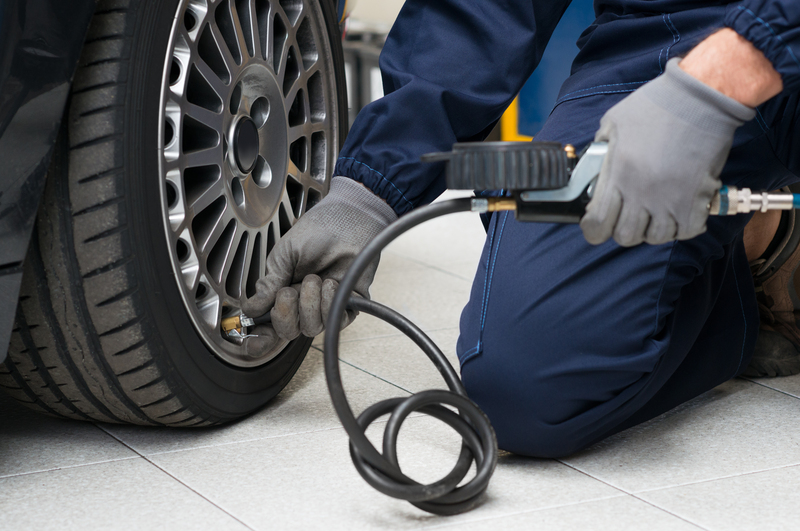Preserve Your Sofa: How Experts Recommend You Store It Long-Term
Posted on 25/05/2025
Preserve Your Sofa: How Experts Recommend You Store It Long-Term
Is your living room furniture taking up space, or are you relocating temporarily and worried about your favorite couch? Preserving your sofa for the long haul requires more than just tossing a sheet over it and hoping for the best. Whether you're storing your sofa for a move, an extended vacation, or for seasonal reasons, following tried-and-true expert advice can help ensure your couch looks and feels as good as new when it's time to bring it back home.
Why Proper Sofa Storage Matters
Your sofa is more than just a piece of furniture--it's an investment in comfort and style. Improper storage can result in fabric damage, frame warping, unwanted odors, or even pest infestations. If stored carelessly, mold, mildew, and moisture may irreversibly damage your sofa. Proper long-term storage techniques are essential to prolong the life and appearance of your upholstered or leather couch.

Top Reasons to Store Your Couch Long-Term
- Temporary relocation for work or travel
- Renovating or remodelling your living space
- Downsizing or decluttering your home
- Seasonal changes (e.g., switching to outdoor seating in summer)
- Hand-me-downs for future homes or family members
No matter your reason, ensuring you preserve your sofa during storage is crucial to maintaining its quality and value.
Preparing Your Sofa for Long-Term Storage
1. Start with a Deep Clean
Before you stash your sofa away, give it a thorough cleaning--this first step is critical. Dirt, food crumbs, and body oils can attract pests or mildew and leave lasting stains, especially after months in storage.
- Fabric Couches: Vacuum all surfaces with an upholstery attachment. Spot-clean stains with a mild upholstery cleaner or white vinegar solution, following the manufacturer's care instructions. Let it dry completely before moving to the next step.
- Leather Sofas: Use a soft cloth and a leather cleaner or a mix of water and gentle soap. Condition the leather with a specialized conditioner to keep it supple and prevent cracks during storage.
- Remove Odors: Sprinkle baking soda on cushions and let it sit for at least 15 minutes before vacuuming up. This will help neutralize any lingering smells.
Tip: Ensure your furniture is completely dry before storing to avoid mold and mildew.
2. Disassemble When Possible
If your sofa has removable legs, arms, cushions, or frames, experts recommend disassembling your sofa for storage. This not only makes the sofa easier to move, but it also reduces strain on joints and minimizes the risk of structural damage during transport or while in storage.
- Take photos as you go for easy reassembly later.
- Use labeled bags to keep all screws, bolts, and hardware together.
- Wrap small parts separately and cushion corners to prevent scratching or chipping.
3. Choose the Right Storage Facility
The environment where your sofa is stored makes a significant difference in its preservation. Standard garages or attic spaces often experience extreme temperature fluctuations and humidity levels, which can wreak havoc on both wood and upholstery.
- Choose Climate-Controlled Storage: Experts unanimously recommend climate-controlled storage units when storing sofas for several months or more. These units regulate temperature and humidity, preventing warping, mold, and cracking.
- Pick a Clean, Dry Location: Moisture can lead to mold, mildew, and rusted springs. Avoid places that are damp or prone to leaks, like basements or old sheds.
- Consider Accessibility: Plan for easy access in case you need to inspect, rearrange, or temporarily use the sofa.
Pro Tip: Visit the storage facility in advance to check for cleanliness and pest control measures.
How to Protect Your Sofa During Storage
1. Wrap Your Sofa the Right Way
A common mistake when storing furniture is wrapping everything in plastic. Although plastic seems protective, it actually traps moisture, which could cause irreparable damage such as mildew or sticky mold. Experts recommend using breathable materials instead.
- Use Cotton or Canvas Covers: Furniture blankets, cotton drop cloths, or specialized sofa covers allow airflow and prevent dust accumulation while avoiding moisture build-up.
- Avoid Direct Plastic Contact: If you must use plastic, such as for an outer layer during moving, ensure there's a breathable layer (like a sheet) between the plastic and upholstery.
- Cover All Sides: Don't tuck the cover too tightly--allow some space for air circulation.
2. Elevate Off the Floor
Keep your sofa off the ground to protect it from dust, moisture, or unexpected leaks. Use wooden pallets, blocks, or risers to elevate your couch several inches above the storage unit floor.
- Protects against pest infestation from crawling bugs or rodents.
- Prevents water damage in the event of flooding or seepage.
- Encourages airflow underneath, reducing the chance of mold growth.
3. Mind the Positioning
Stacking or tilting sofas can put undue pressure on frames, arms, and cushions, leading to warping or compression damage over time.
- Store your sofa in its natural position, with legs down as if it were in your living room.
- If space is limited, store upright on the armrests only if they are sturdy and designed for that weight; otherwise, avoid this method.
- Don't stack heavy items on top of your couch--especially if cushions are made from memory foam or down, which can lose resilience.
4. Ventilate and Inspect Regularly
Even in long-term storage, it's wise to visit your storage unit every few months. Briefly remove covers to let the furniture breathe, check for pests, mold, or moisture, and address any emerging issues before they escalate.
Avoiding Common Sofa Storage Mistakes
Even with good intentions, some missteps can spell disaster for your stored couch. Here are mistakes the pros warn against:
- Storing Wet Furniture: Even small amounts of moisture can promote mildew, mold, and rust.
- Wrapping in Thick Plastic: Plastic can trap condensation, especially in climates with temperature swings.
- Using Mothballs or Strong Chemicals: While these deter pests, they can cause stubborn, unpleasant odors and ruin upholstery or leather.
- Ignoring Pest Prevention: Failing to treat or inspect for pests can lead to infestations that destroy fabric and wood.
How to Prevent Pests
- Ensure your storage unit is pest-free and treated regularly.
- Avoid storing food or crumbs with the furniture.
- Consider using natural pest deterrents like cedar blocks if safe for your sofa material.
Special Care for Different Sofa Materials
Storing Leather Sofas Long-Term
Leather needs moisture to remain supple, but too much humidity causes it to warp or grow mold. Experts suggest:
- Apply a high-quality leather conditioner before storage.
- Use acid-free tissue between folds or removable cushions.
- Store away from direct sunlight, which causes fading and cracking.
Storing Fabric and Microfiber Sofas
- Use an upholstery-safe fabric spray to deter mites and maintain freshness.
- Take extra care to keep the area dry--microfiber can absorb odors and moisture.
Antique or Delicate Sofas
- Consider professional packing and climate-controlled storage for valuable antiques.
- Avoid stacking, placing heavy items on cushions, or bending the frame.
What to Do When Retrieving Your Sofa from Storage
When the big day arrives, and it's time to bring your couch back home, carefully reverse the storage process:
- Uncover and Ventilate: Remove all covers and allow your sofa to air out outdoors or in a well-ventilated room.
- Inspect for Damage: Check for signs of pests, mold, or structural damage.
- Clean Again: Vacuum, spot-clean fabric, and re-condition leather if needed to refresh your furniture.
- Reassemble Carefully: Follow your earlier photos and use labeled hardware for easy and correct reassembly.
Frequently Asked Questions: Preserving Your Sofa in Storage
How long can I safely store a sofa?
With proper cleaning, covering, and climate control, many sofas last years in storage without noticeable deterioration. Check periodically and refresh your covering if you extend beyond 12 months.
Should I store my sofa standing up or flat?
It's always best to store your couch upright, on its legs. Storing a sofa on its side or end can stress the frame and ruin cushion shapes.
Should I use moisture absorbers in the storage unit?
If the climate is humid, moisture absorbers like silica gel or DampRid can further protect against mold. Place them near--but not directly on--your couch.
Is insurance necessary for stored furniture?
Insurance is highly recommended for valuable items. Check your homeowner's or renter's policy, as some plans provide coverage for itens in storage. If not, consider insurance from the storage provider.

Conclusion: Preserve Your Sofa for a Lifetime
A high-quality sofa can last decades, but only with the right care--especially during long-term sofa storage. By cleaning thoroughly, storing in a climate-controlled facility, wrapping properly, and maintaining airflow, you'll safeguard your furniture from common hazards. Remember, the investment in careful, expert-recommended storage techniques today means you can enjoy your favorite couch for years to come, whether you're moving, renovating, or simply making space.
Preserve Your Sofa: Expert Storage Checklist
- Vacuum and clean thoroughly
- Disassemble and carefully label small parts
- Choose a climate-controlled, clean location
- Wrap in breathable fabrics, not plastic
- Elevate sofa off the floor
- Store upright, without heavy objects on top
- Check periodically for moisture, pests, or damage
With these expert recommendations, preserving your sofa in long-term storage becomes a manageable task that pays off with lasting comfort and beauty for your home furniture.



